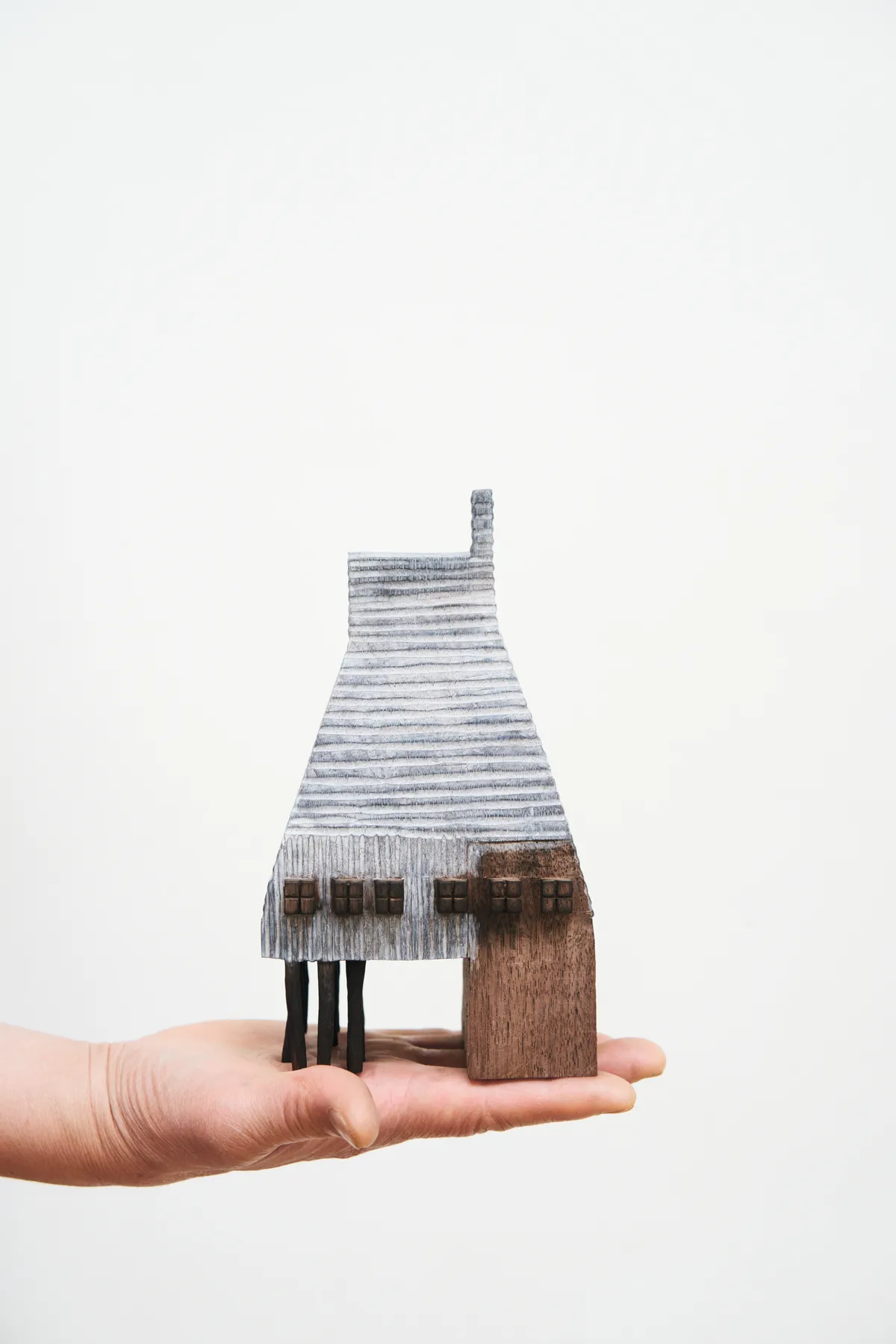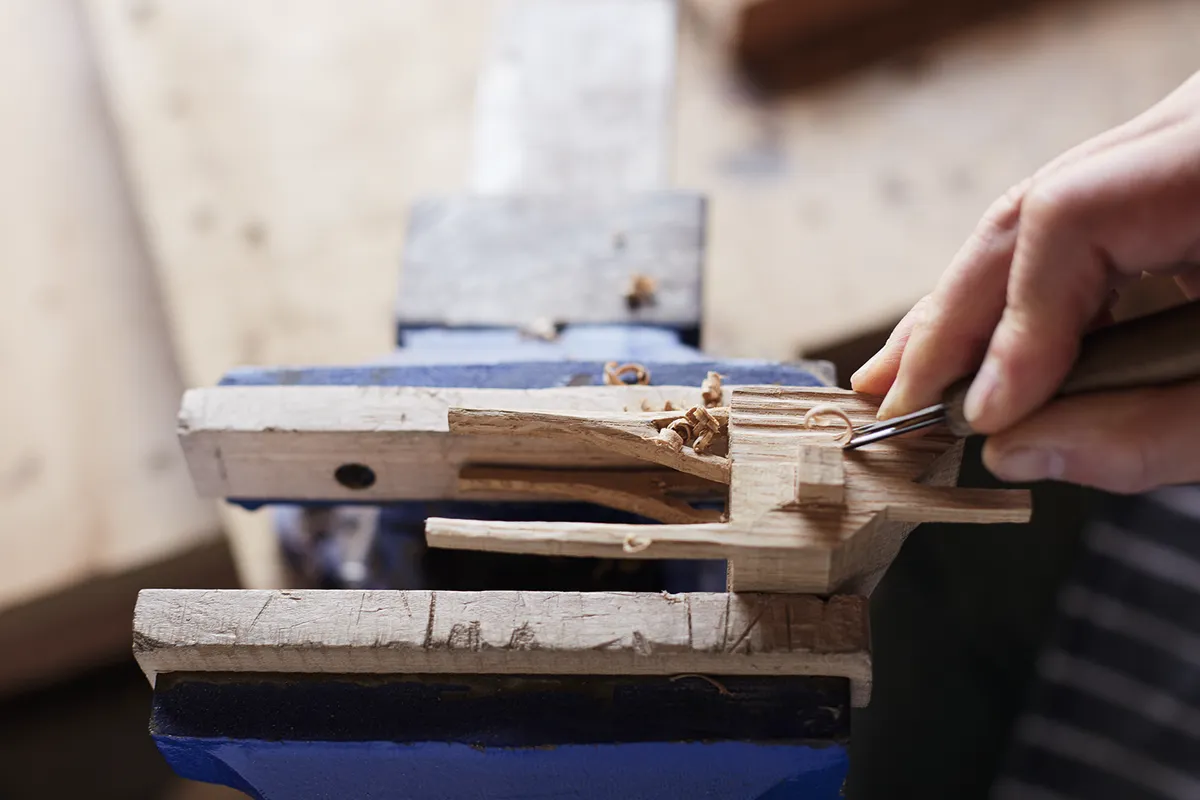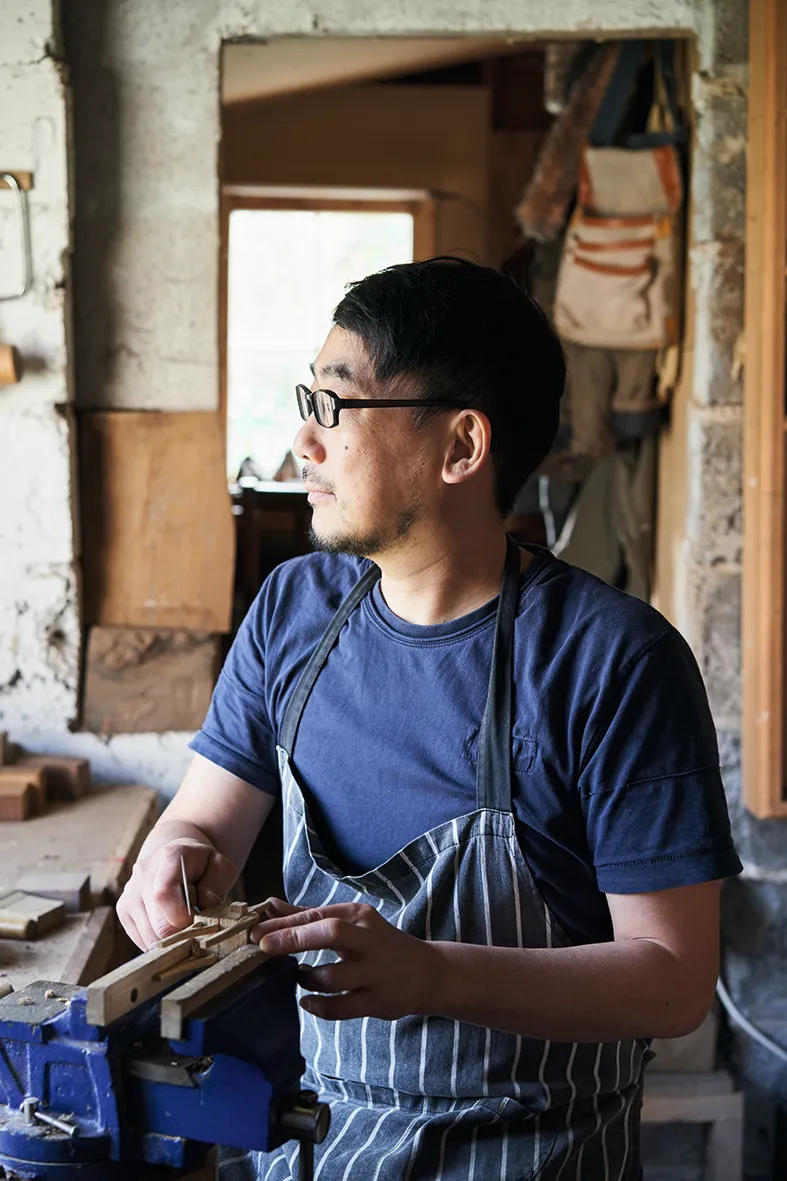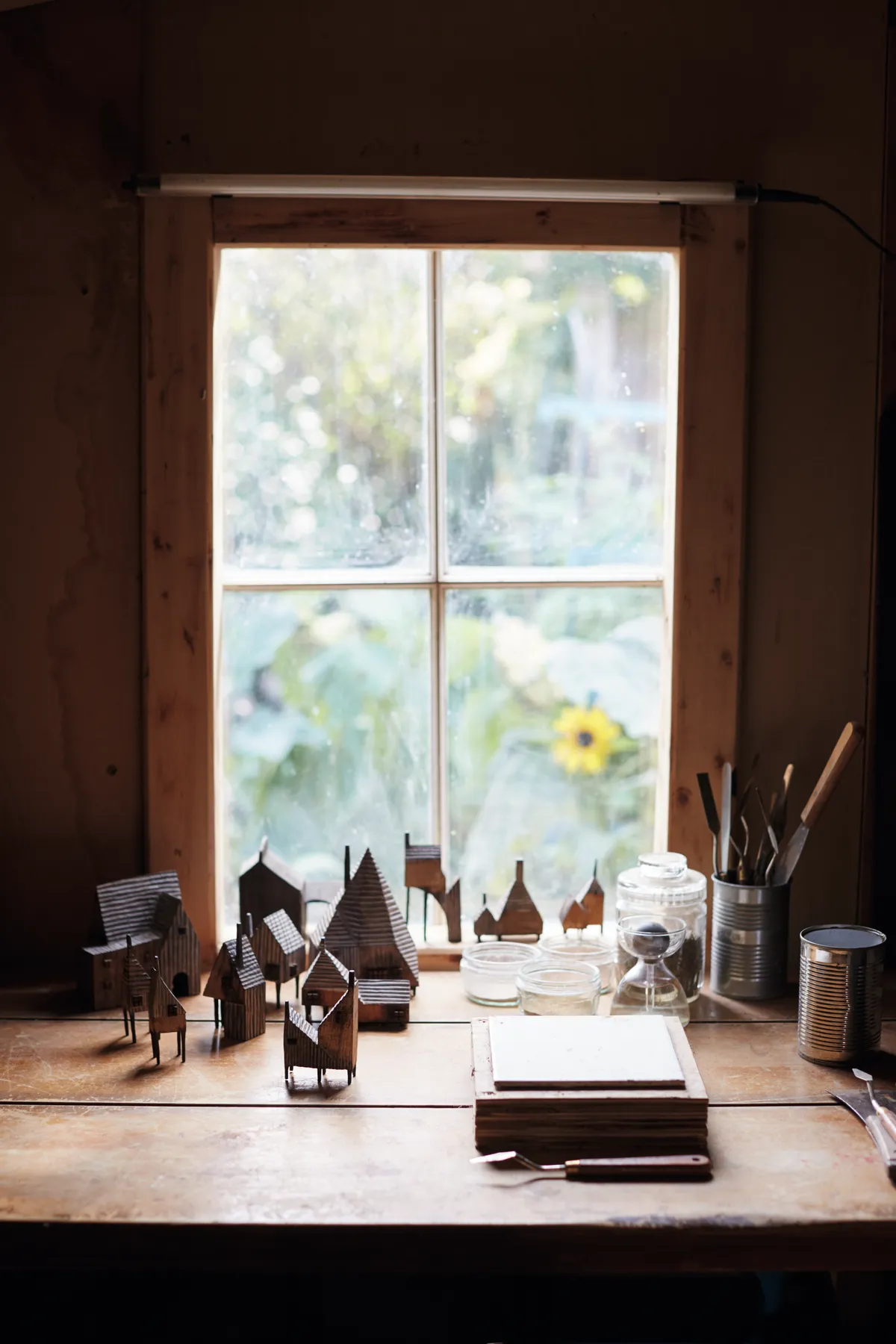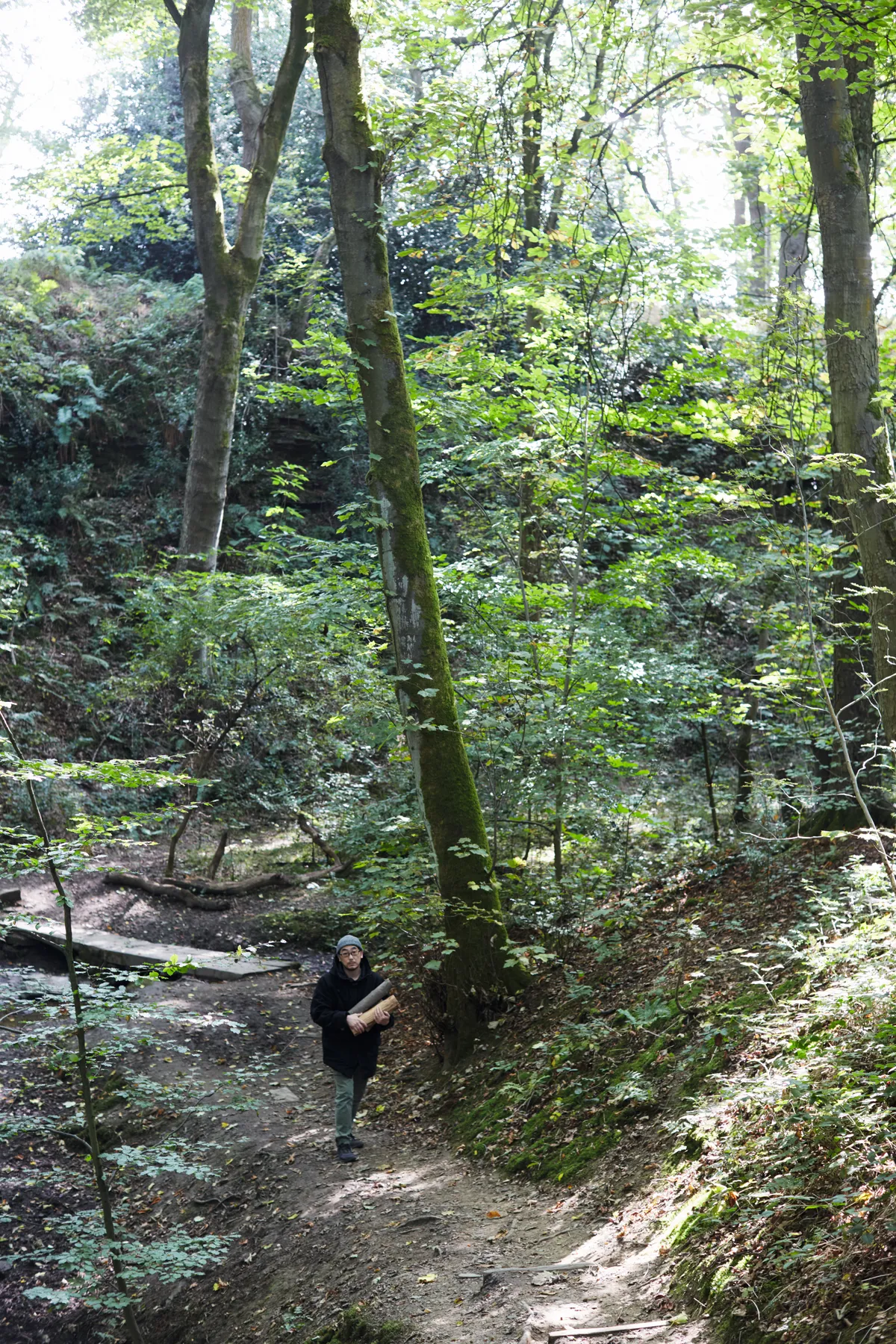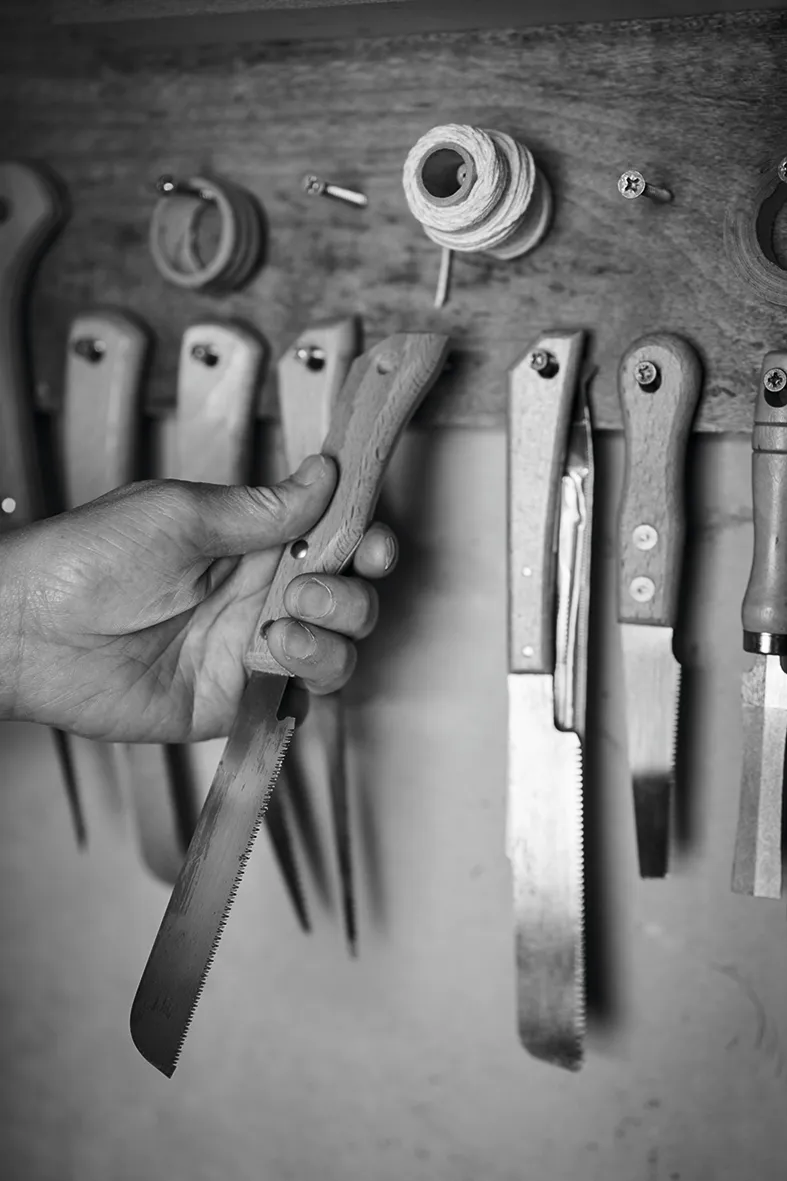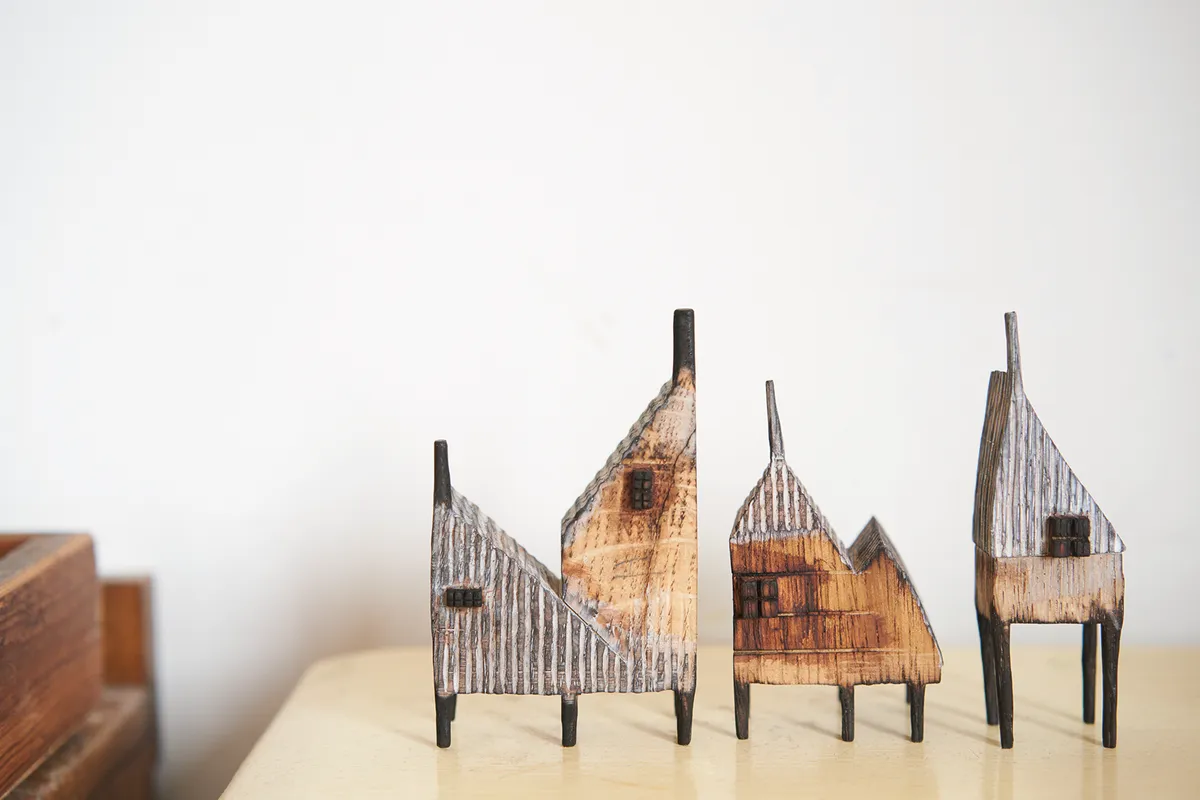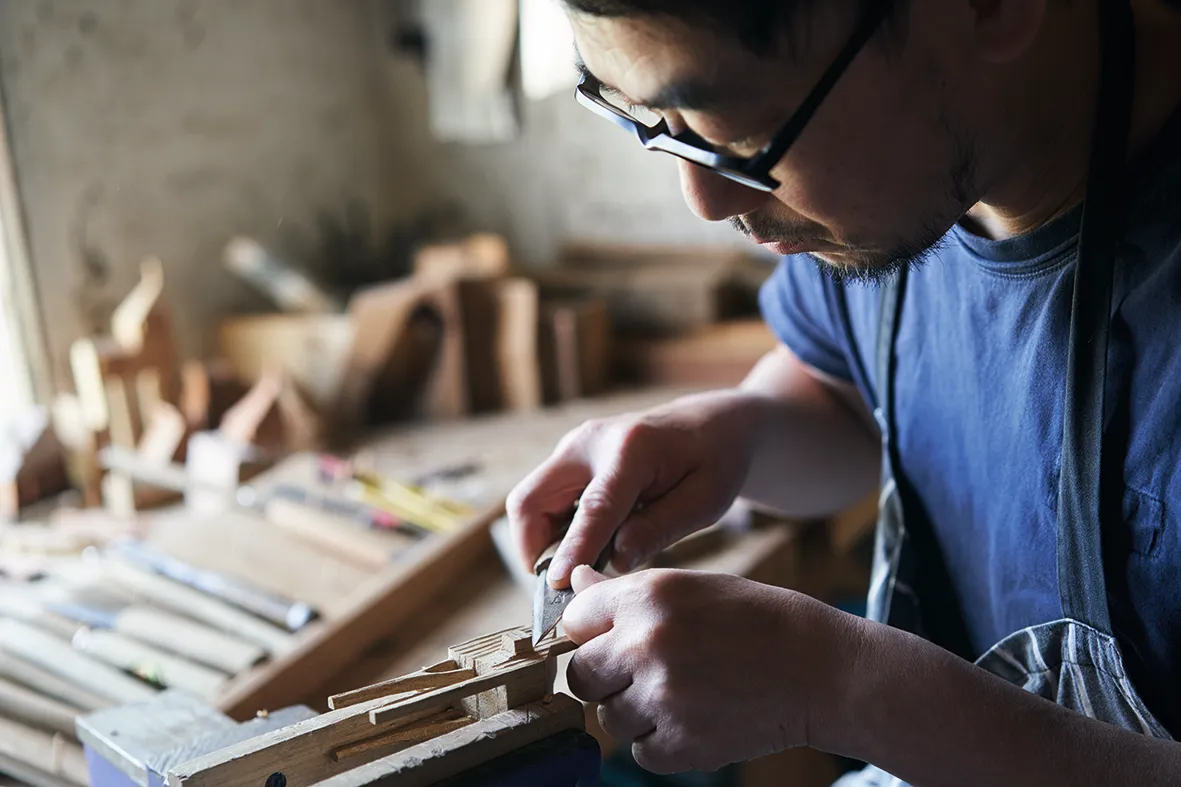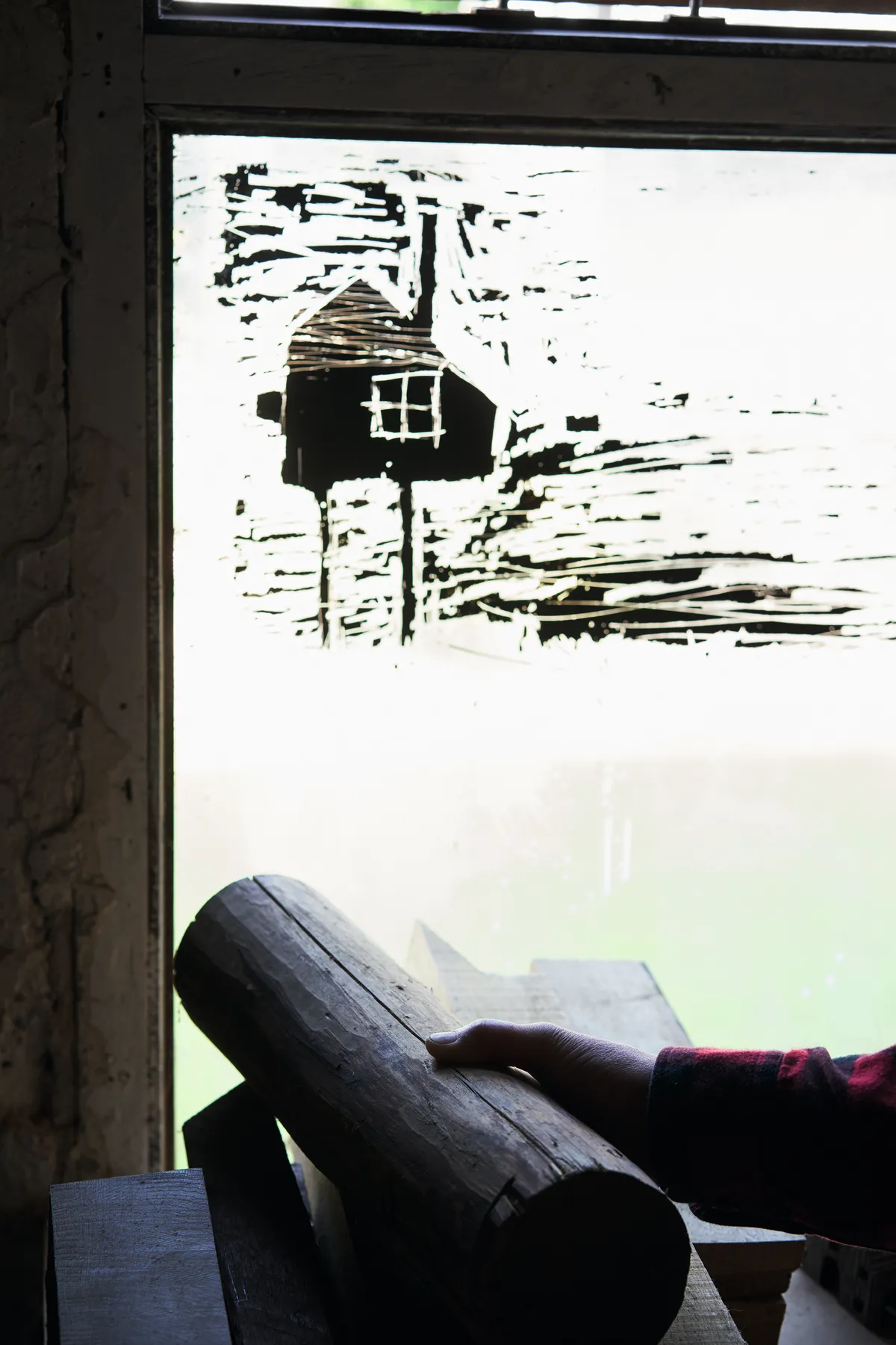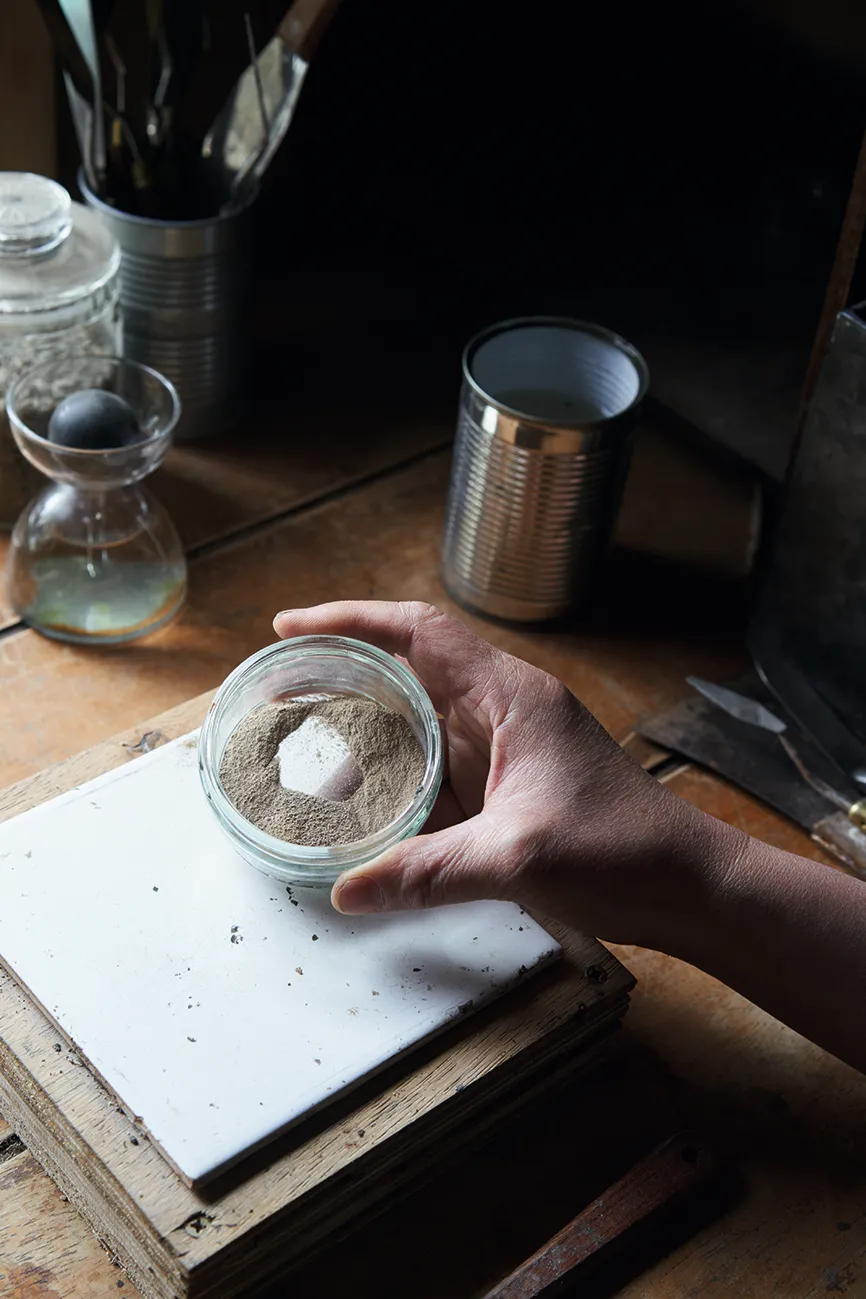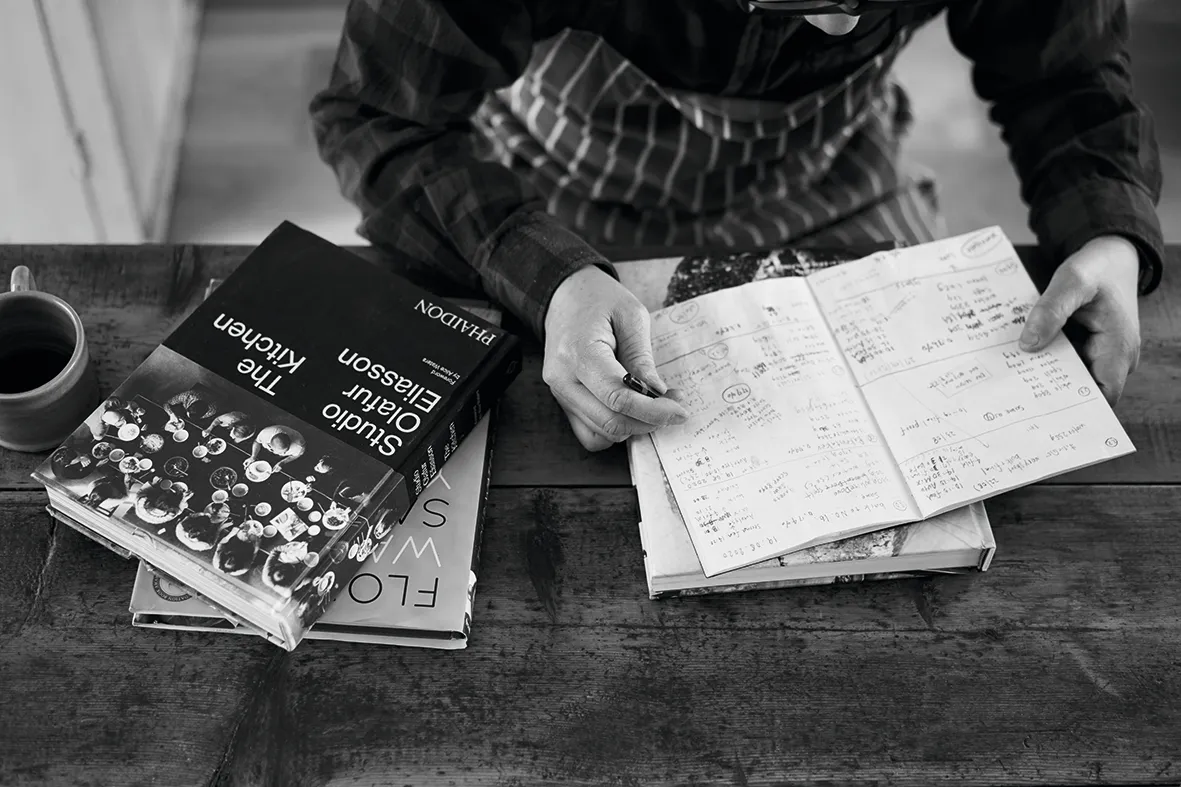Yukihiro Akama has always loved wood. As a child, living in Miyagi Prefecture in the north of Honshu, Japan’s main island, he would walk in the pine and cedar woods with his father, foraging for mushrooms and berries. As a student of architecture and landscape design, and a self-confessed hippie, he focused his work around the properties and possibilities of bamboo. And, since graduation, wood has formed the core of a career that has spanned carpentry, house building and design, a spell as a lumberjack, and now art – as a designer and maker of miniature houses, which are at the same time both comfortingly familiar and unsettlingly strange.
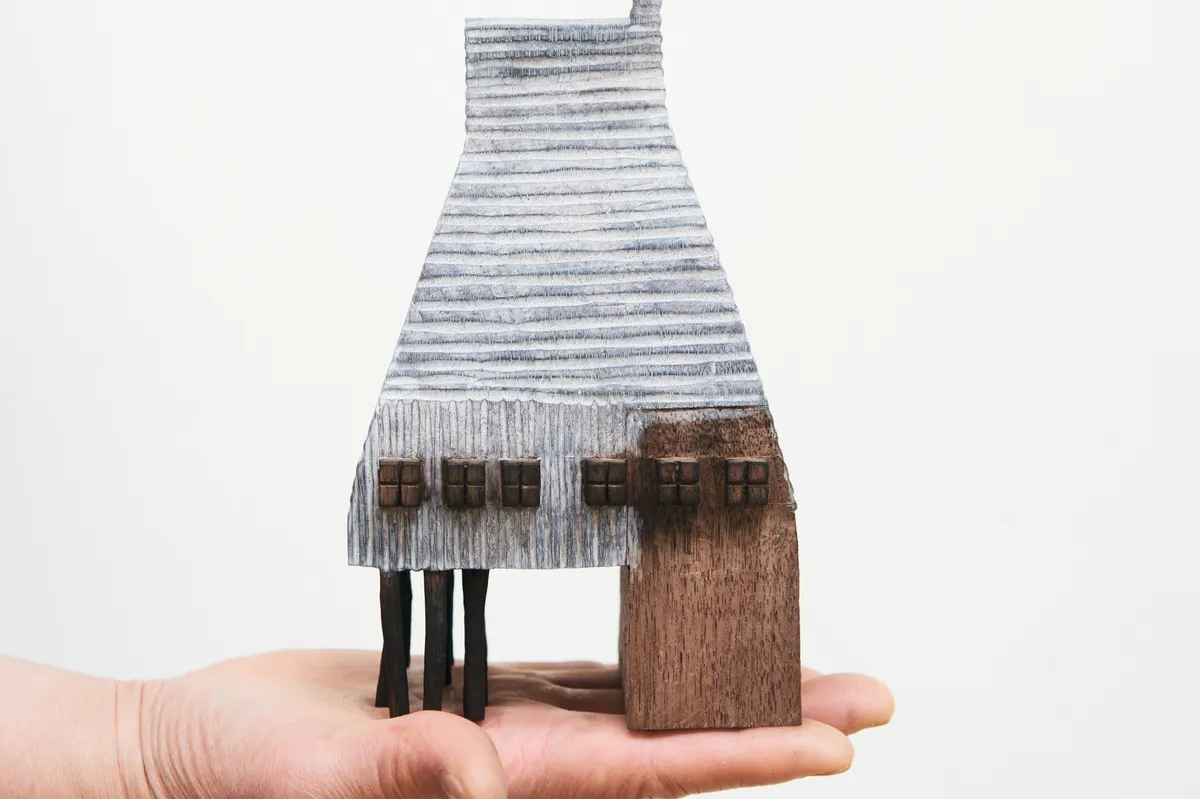
Above: Standing around 10-25cm high, Yukihiro’s miniature houses, marked with incredible tiny detail, are carved from mostly native British wood to which Yukihiro adds natural materials, such as stone and clay.
The same could perhaps be said of Yukihiro’s current situation. On the one hand, he lives in Huddersfield with his wife Ryoko and two children, goes out to work (he works on his sculptures early in the morning and late into the night) and bakes sourdough whenever he can. But he never planned to be here. It was only after the meltdown of the Fukushima Daiichi Nuclear Power Plant in the Japanese earthquake and tsunami of 2011 that the family, then living just 50km from the reactor, fled to England, where Ryoko had previously lived. “It was a big change, especially for me,” says Yukihiro, with typical understatement. “I thought I could understand English before we came here.”
The language barrier meant Yukihiro struggled to find work as a designer or joiner, until he met Samantha Allan, founder and curator of The Shop Floor Project in Ulverston at an arts festival. “We got talking about architecture and I told her about a traditional timber and mud store house I’d built for my mother’s gardening tools,” says Yukihiro. When Sam suggested he make some small houses for an exhibition of Japanese artists she had coming up, Yukihiro was unsure. “I felt that the creative part of my brain had turned off,” he says. “But then I found a block of wood in the garden when I was cutting weeds so I thought I’d try." His first series sold out in days, and since then he has made countless more in his garden studio.
Inspiration could come from anywhere – barns, smokehouses, chimneys and water towers have all sparked collections, all chiselled from a single block of wood, mostly oak, and most of them offcuts from a furniture-maker friend. Sometimes he starts with a sketch but not always: “Often I find the house in the wood,” he says. “The grains and the knots show me where to cut.” Some, like his rocking or river house series, sit on platforms; many more teeter on stilts, themselves often inspired by the shapes of tree trunks. Some have walls blackened with fire or daubed with clay gathered in the local woods with his children, others he decorates with tiny pebbles. All seem to have stories to tell.
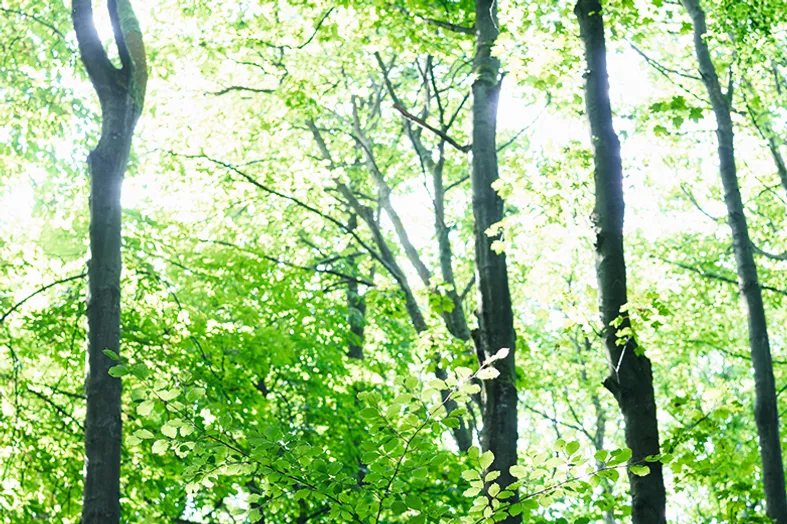
Above: Woods near Yukihiro’s Yorkshire home are a source of inspiration, and wood and clay.
Aside from his evident pleasure in being creative again, the joy for Yukihiro lies largely in what those stories could be. “Some people tell me they expect the houses to move or talk, others that they imagine sitting on the veranda and holidaying there. I think what I’m trying to do is to design something that could potentially exist, but doesn’t; something a bit in between.” Or, to put it another way, something that makes you wonder – and that they certainly do, in both senses of the word.
In Detail
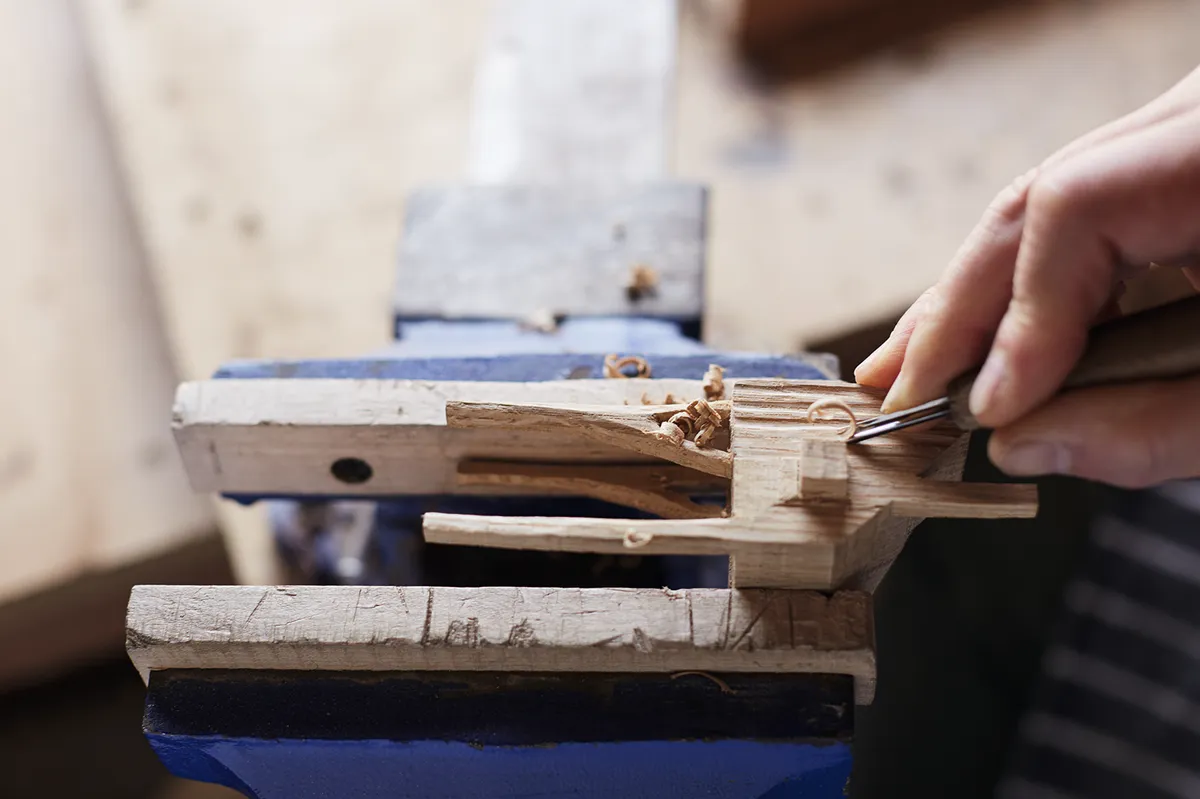
Yukihiro adds a waveform texture to one of his wooden houses using a Japanese chisel known as a chokokuto.
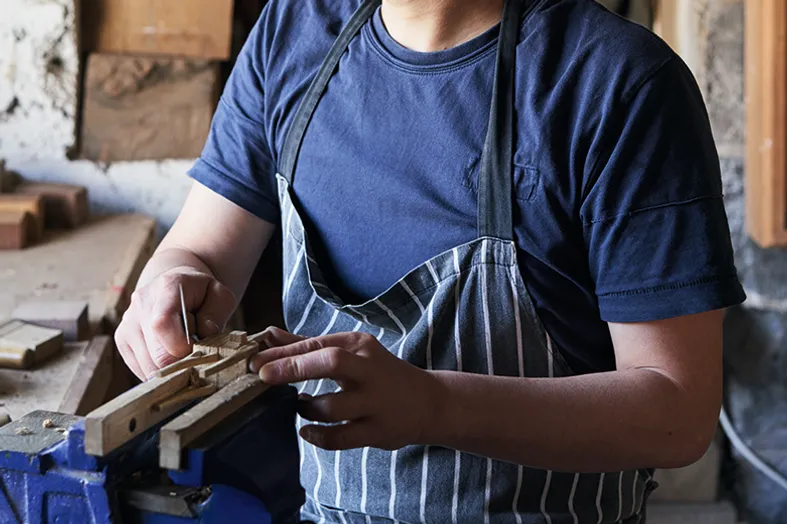
Yukihiro uses a Japanese carving knife called a kiridashi to smooth the wood.
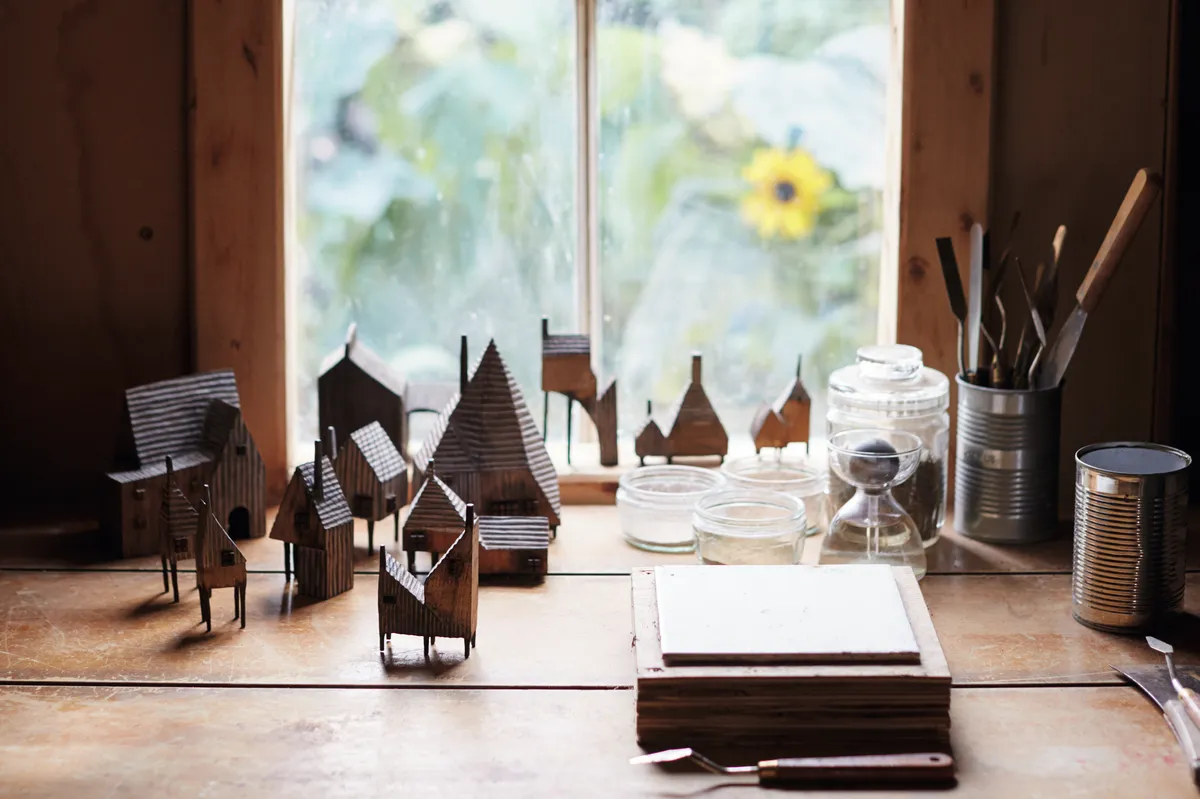
Once he has finished carving his houses, Yukihiro moves them to his desk overlooking the garden to add the finishing touches away from wood dust. More texture is added in the form of clay, which he applies almost like a render, before carefully placing tiny stones and adding paint and texture to surfaces.
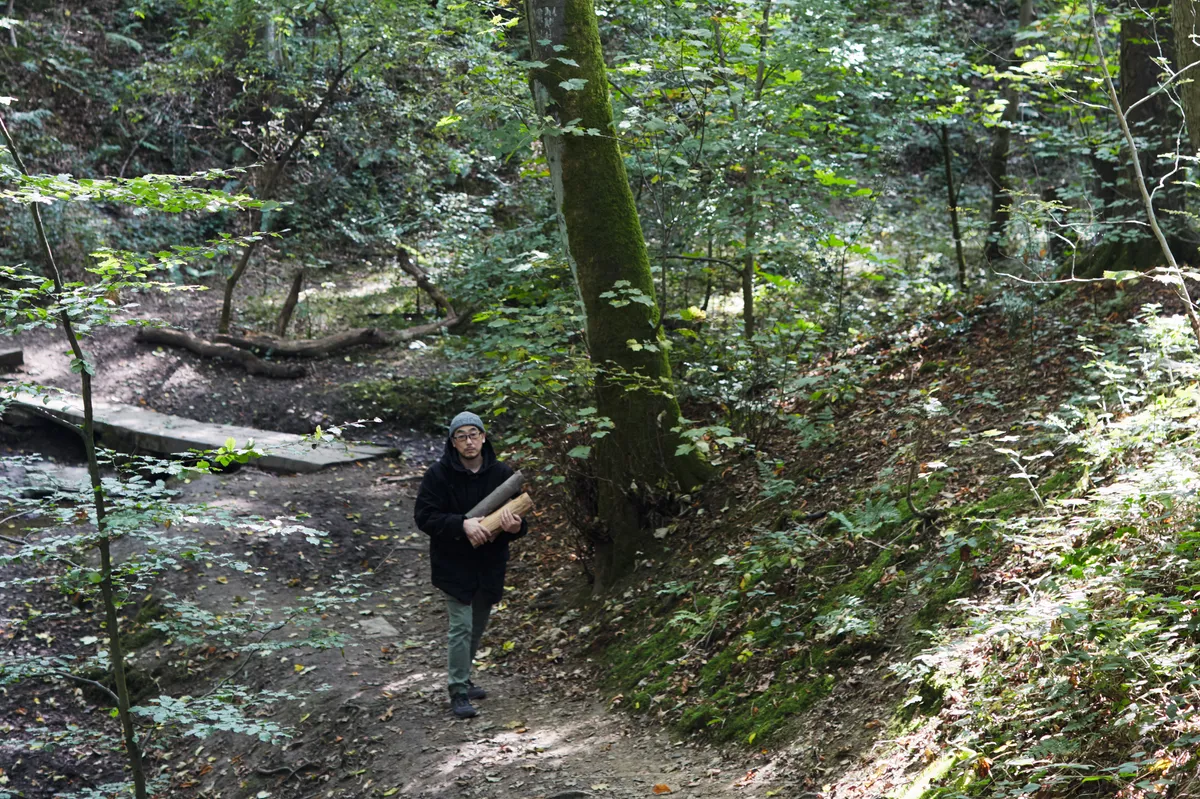
Most days Yukihiro takes his children for a walk in local woods where he gathers many of the natural materials he uses for his houses. Yukihiro also uses offcuts of oak, walnut, sapele, iroko and maple from a furniture-maker friend.
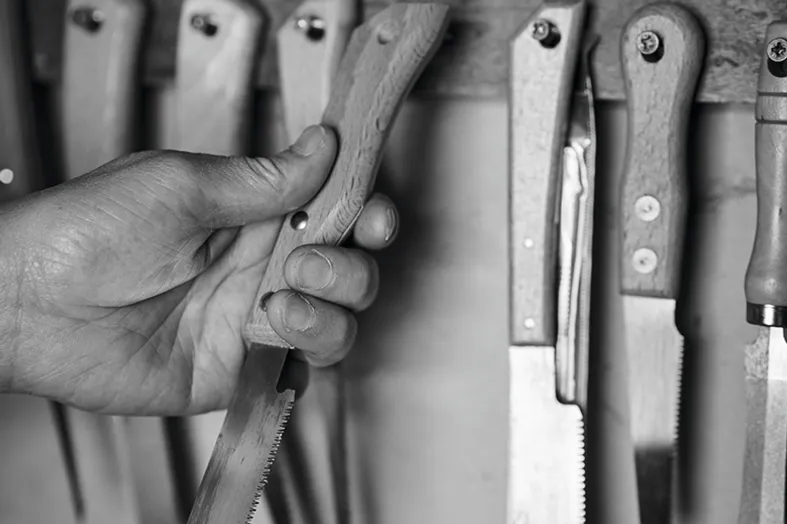
To create the tiny details, such as cross marks on the windows, Yukihiro uses small Japanese saws called nokogiri.
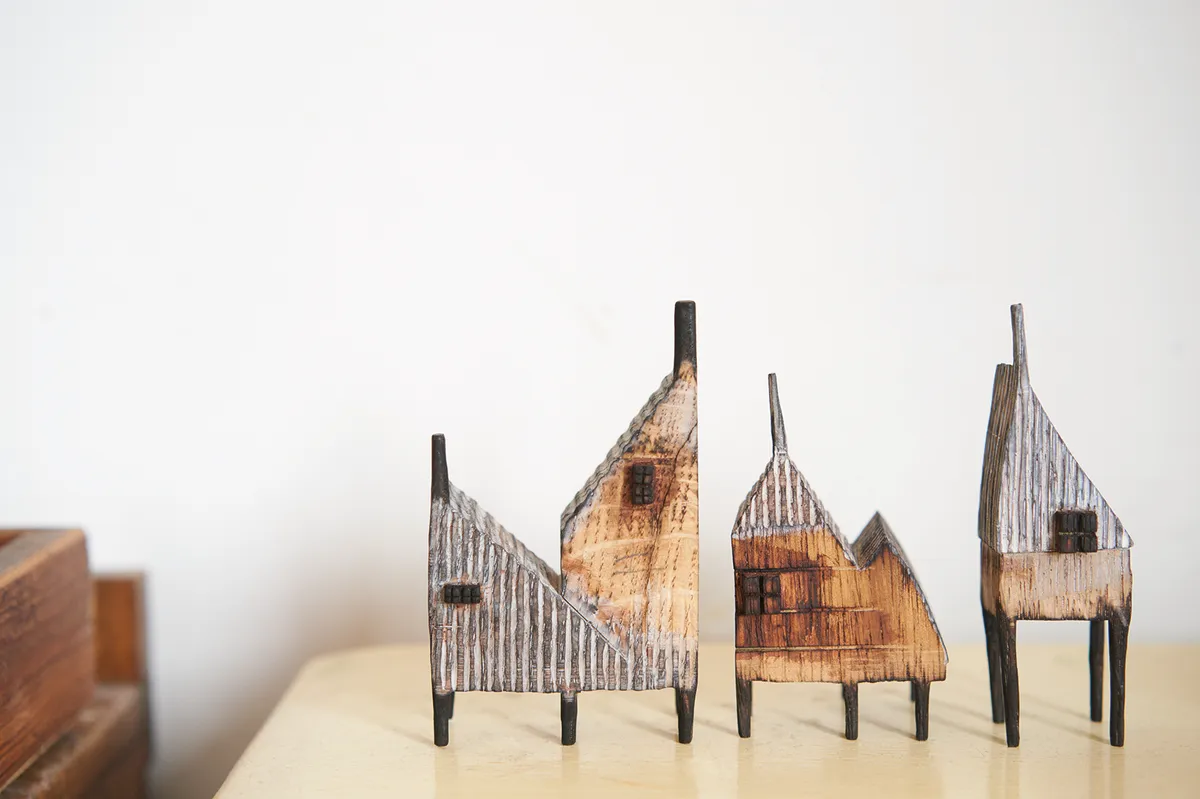
While Yukihiro’s miniature houses have an other-worldly, dream-like quality to them they are inspired by the traditional style of stilt houses found in Japan and other Asian countries.
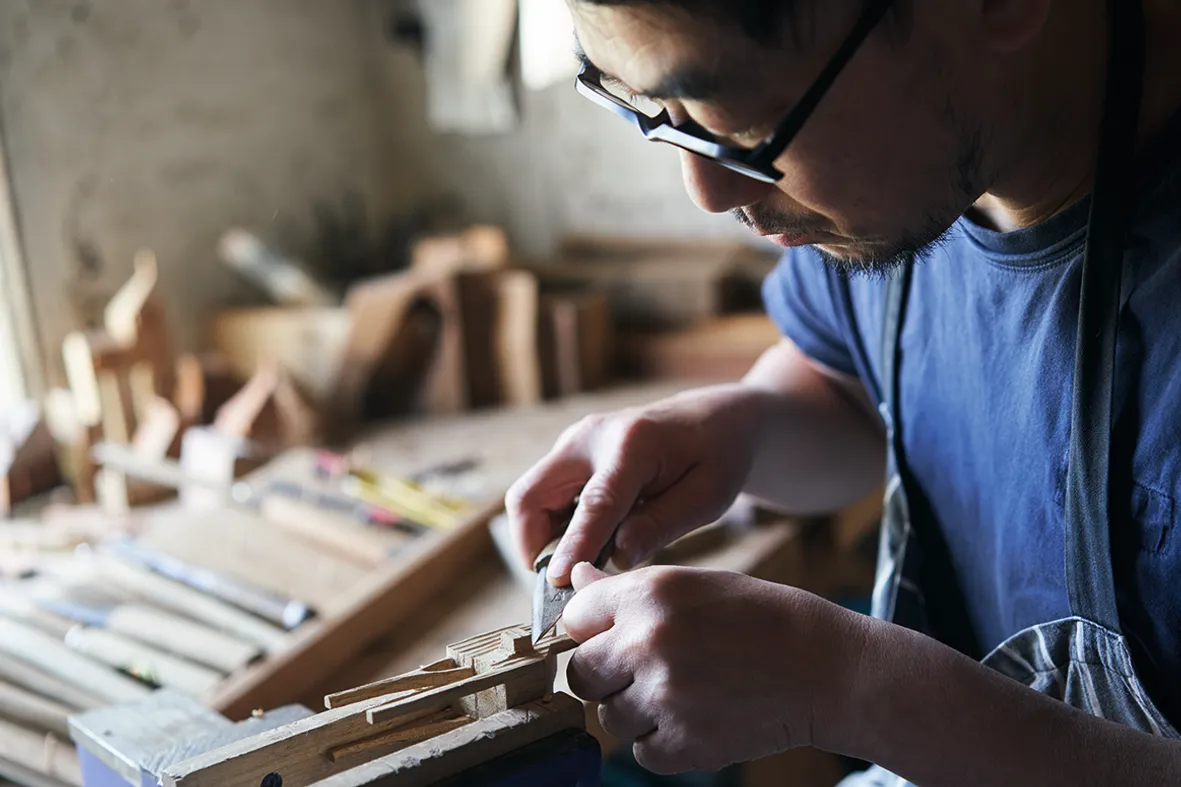
Yukihiro can sometimes spend a whole day working on the surface textures on the wood before adding detailed expression, paint and polish.
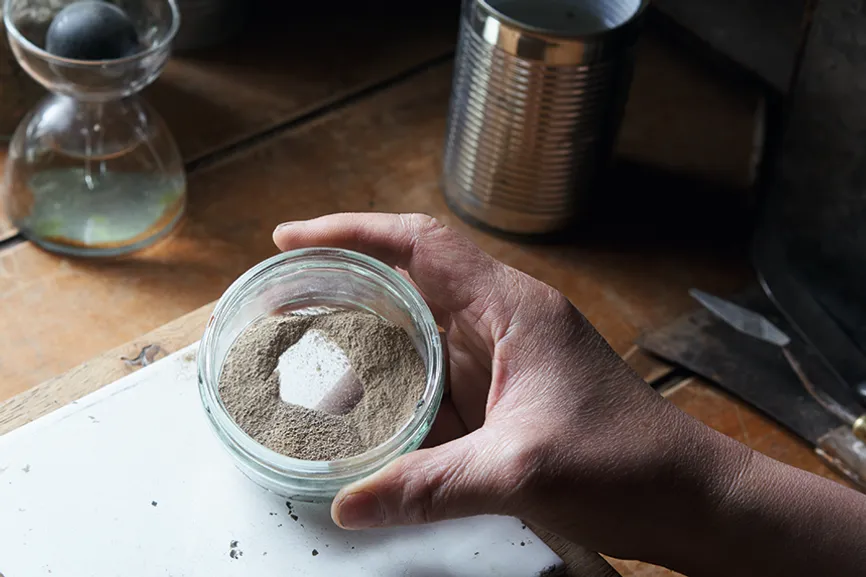
After mixing clay with glue Yukihiro applies the mix with a palette knife.
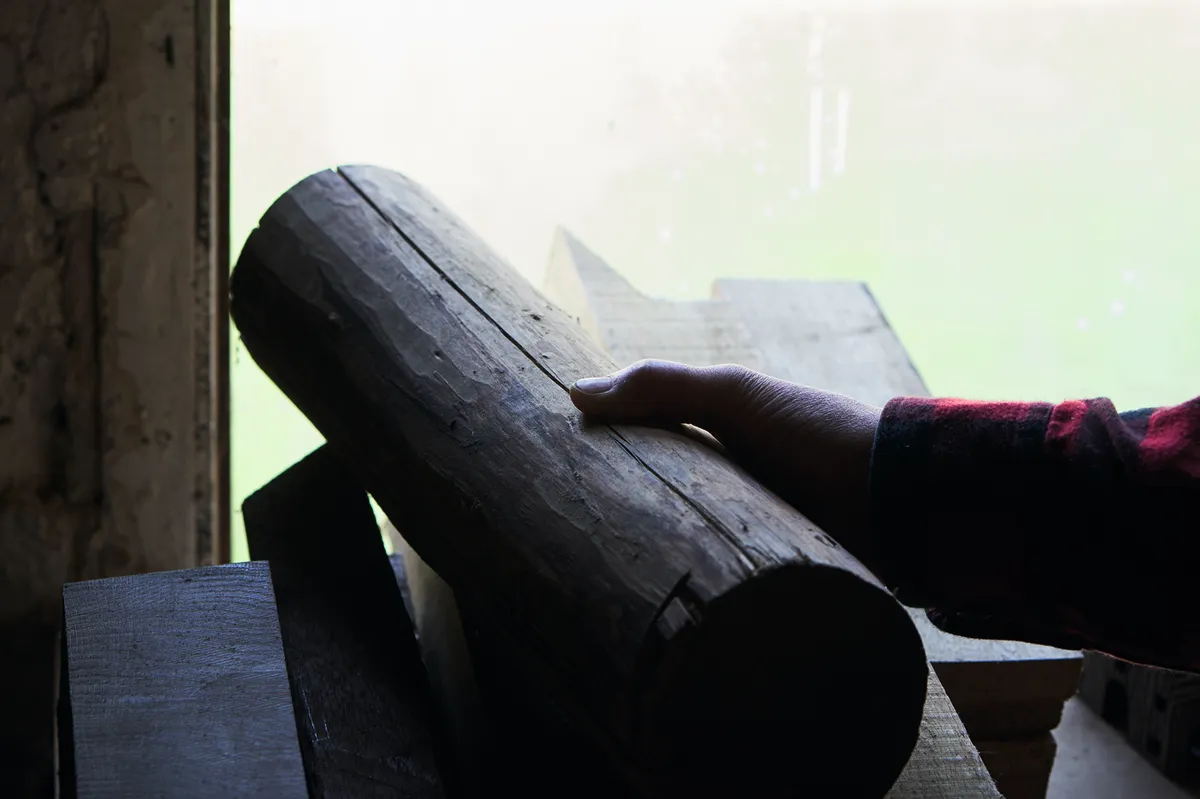
Yukihiro places a peeled maple log to dry. His next step will be to cut the round edges off the log to create a square, then cut out the shape of house using a band saw.
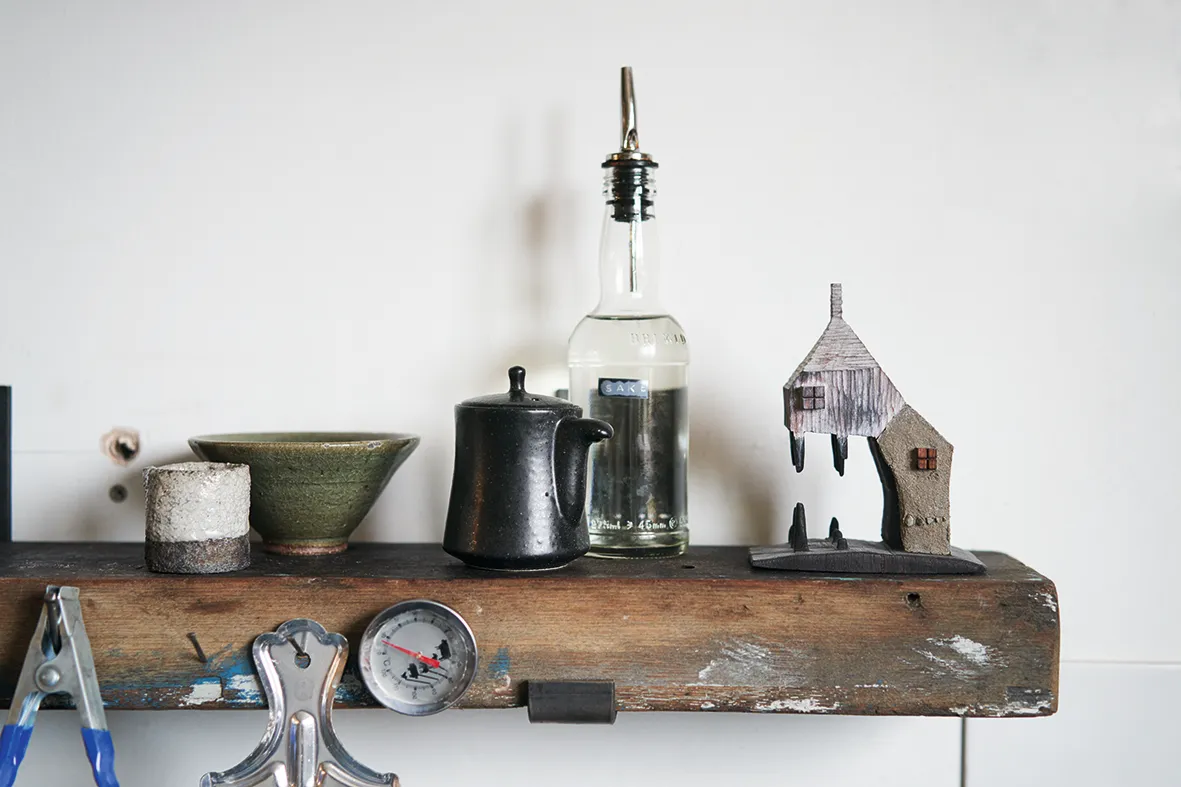
One of Yukihiro’s finished houses, the slightly uncanny looking Ruin House, takes pride
of place on his kitchen shelf.
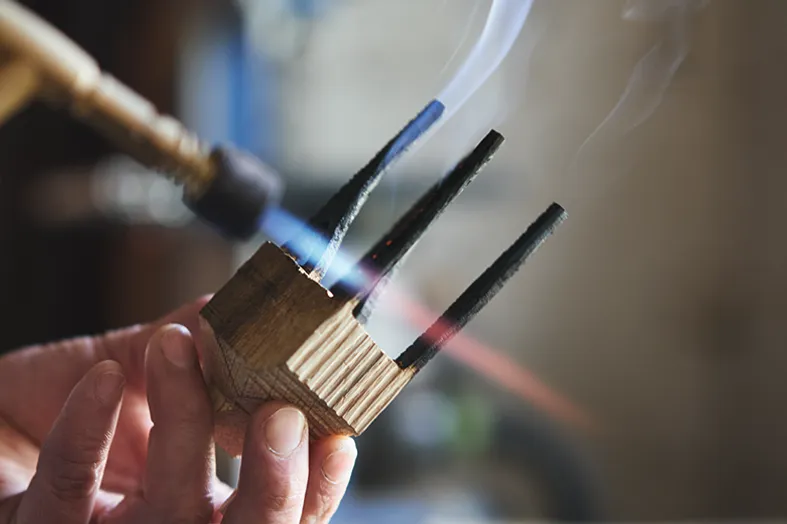
As part of the finishing process Yukihiro chars the legs of one of his pieces with a fire torch, before polishing.
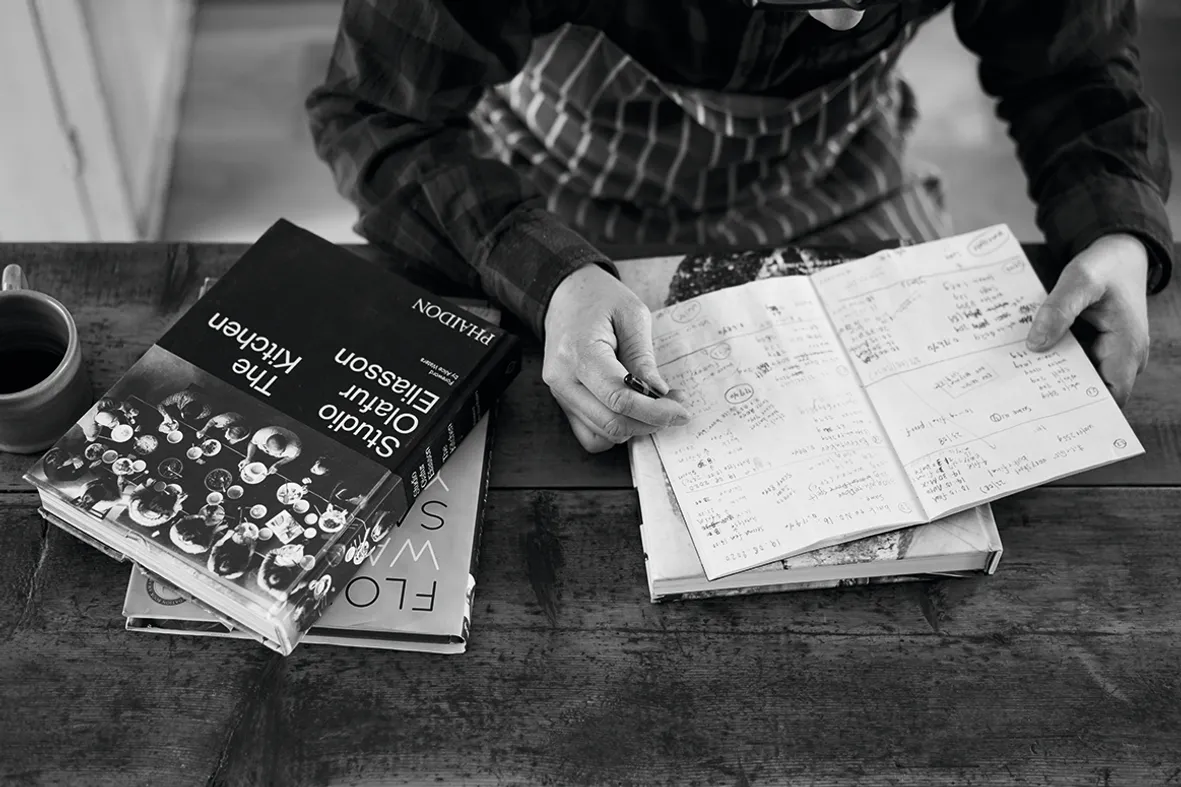
After a long day in the studio, Yukihiro relaxes by perfecting his sourdough bread. Taking the same meticulous approach to baking as to his artworks, he keeps notes on each week’s bake.
Yukihiro’s miniature houses are available to buy or commission through The Shop Floor Project. Tel 01229 584537, theshopfloorproject.com. You can also find out more about his work at yukihiroakama.wixsite.com
